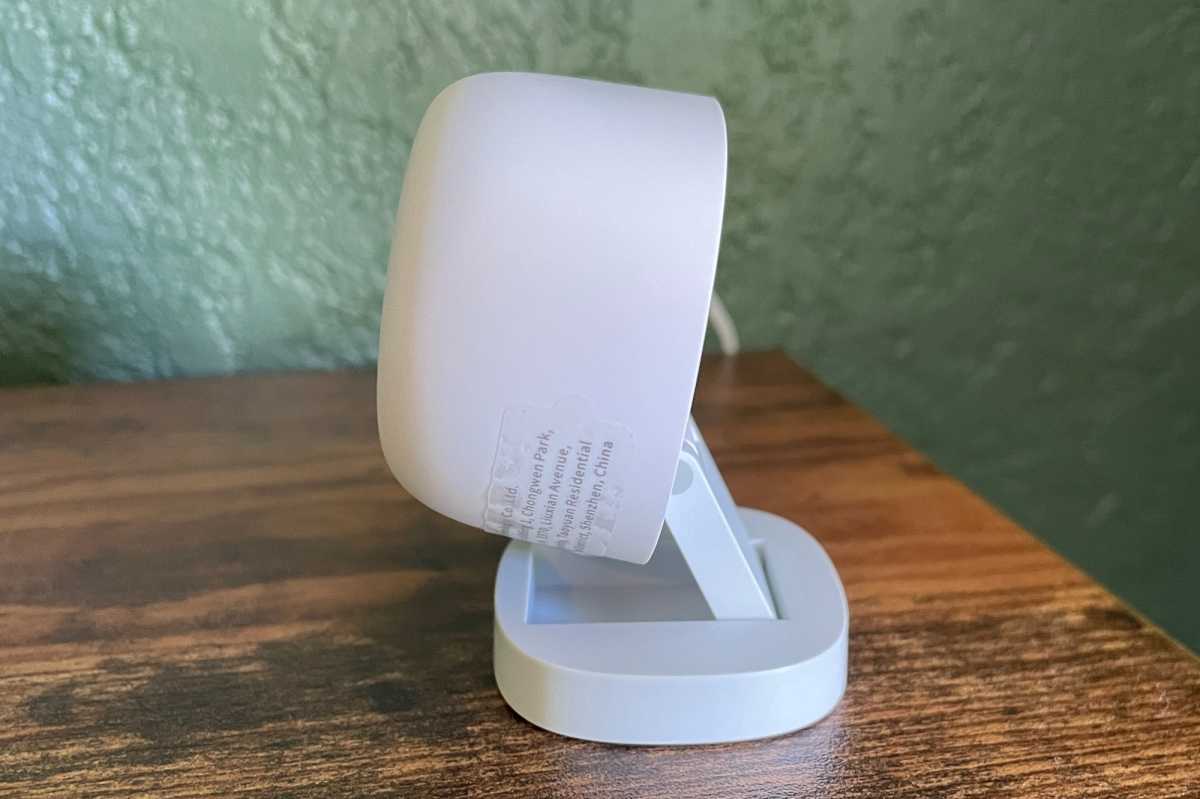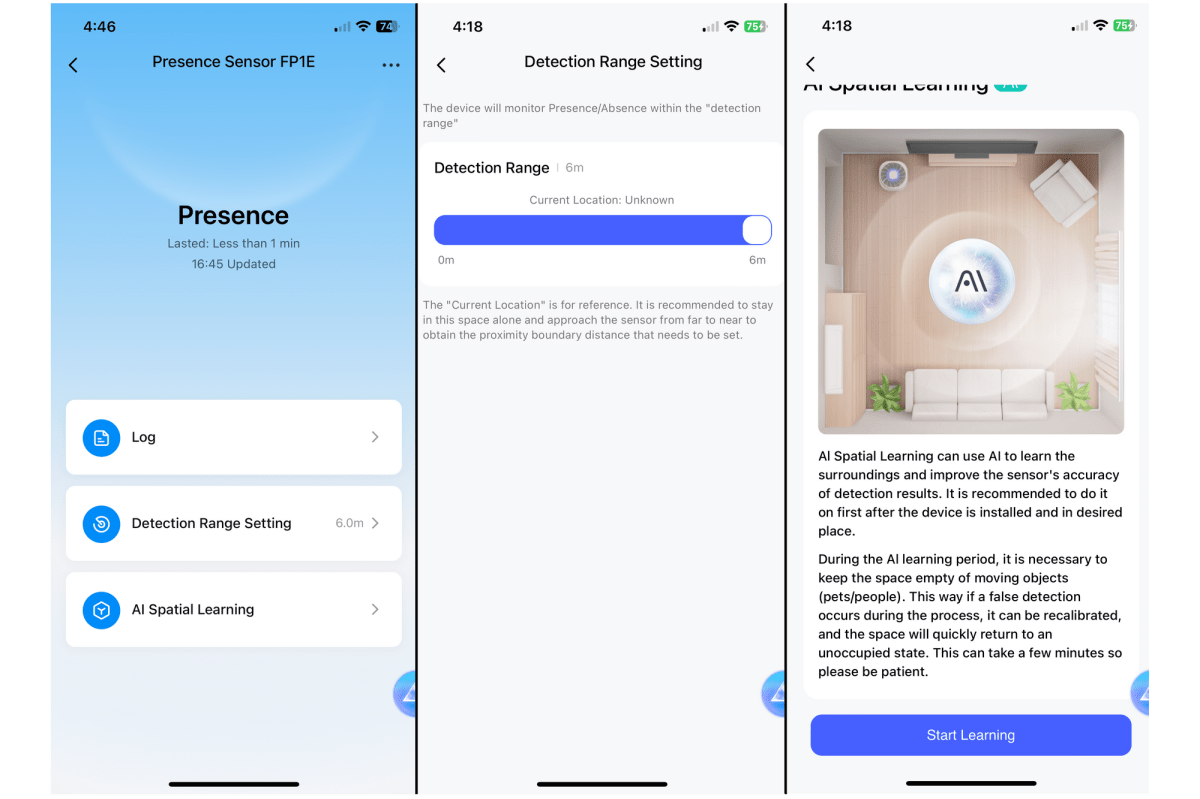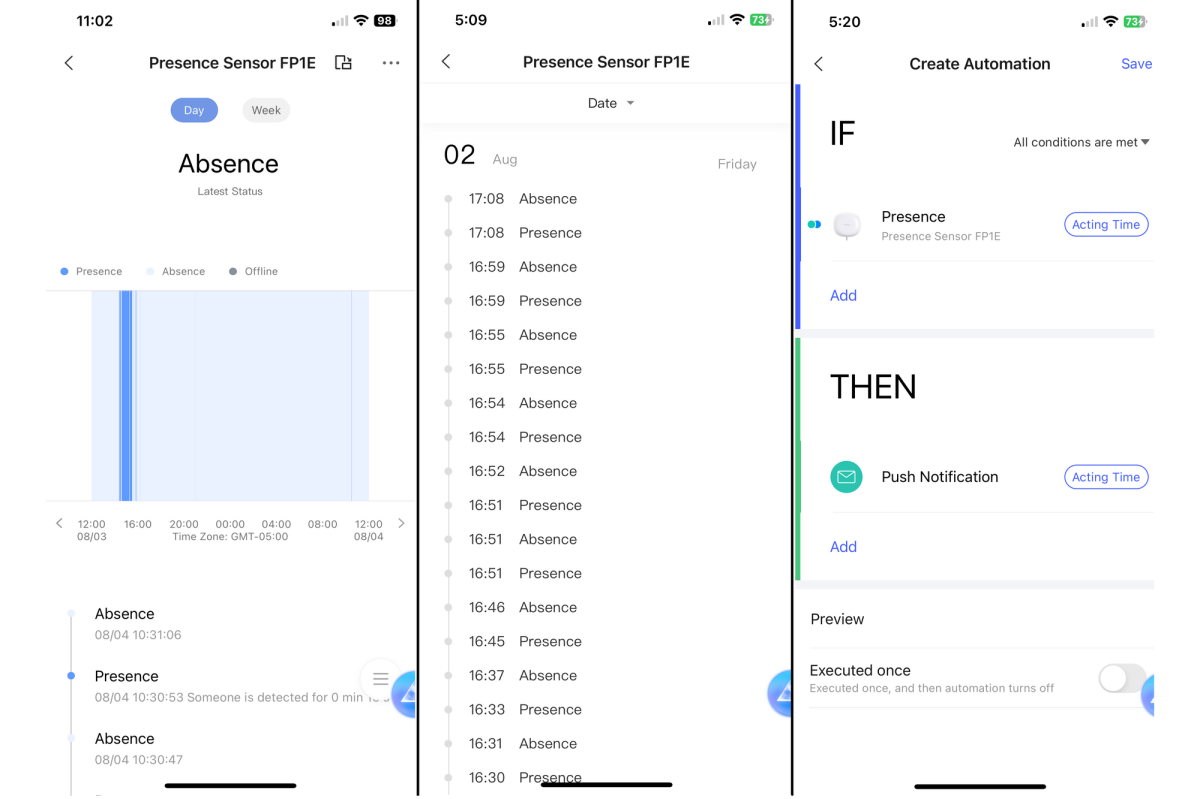Expert’s Rating
Pros
- Highly effective, and very difficult to fool
- Handsome, discreet industrial design
- Supports Matter via an Aqara hub
Cons
- Limited range
- Requires an Aqara smart home hub
- Much more expensive than PIR sensors
Our Verdict
The FP1E’s millimeter wave technology provides for a much more nuanced look at whether a room is occupied or not, but you’ll need one of Aqara’s Zigbee or Matter smart home hubs to use it.
Best Prices Today: Aqara Presence Sensor FP1E

$49.99
Whatever you do, don’t call it a motion sensor. The Aqara FP1E is a presence sensor, and there are some distinct technological differences that you need to know here before we dive into a review of it.
Traditional motion sensors rely on a technology called PIR—passive infrared—to detect movement. Any person, animal, or object with a temperature higher than absolute zero emits heat energy as electromagnetic radiation. A passive infrared sensor detects motion by registering changes in the surrounding thermal radiation when something moves. PIR sensors don’t emit any thermal radiation on their own, and while they can be restricted to recognizing radiation within the range of what a human body would emit, they can’t tell you precisely what in the room has moved.
This FP1E has high sensing quality; I wasn’t able to fool the device by walking slowly, hiding behind a blanket, or even sitting as still as possible.
Specs and technology

Aqara Presence Sensor FP1E is mounted to an articulated stand and can be set on a flat surface or mounted to a wall or the ceiling.
Christopher Null/Foundry
Aqara’s Presence Sensor FP1E is not a PIR sensor. It’s based on millimeter wave (mmWave) technology similar to what’s used in airport security scanners—the type where you put your arms over your head and stand still as the unit spins around you—that can see through your clothing to detect concealed items.
Aqara says the mmWave technology its using allows its sensors to not just detect motion, it can detect the mere presence of a human in the room where it’s mounted. That should not only render it less susceptible to false alarms—from things like pets, ceiling fans, and curtains in front of an open window—it can detect a human in a room even if they aren’t moving at all. The company also says mmWave is also less susceptible to interference from other types of electromagnetic radiation as well as glass or mirrors in the space.
Apart from the mmWave technology at its core, the Aqara FP1E works just like a standard plug-in motion sensor. The hardware is a squat device about the size of a walnut that sits atop an articulated stand. The stand can sit on a tabletop or be mounted to a wall or the ceiling with an included magnetic/adhesive base. (Screws are not included, nor is a 5V/1A power adapter for the included USB cable.)
This review is part of TechHive’s in-depth coverage of the best smart home systems.
The sensor has a vertical field of view of 120 degrees and a variable horizontal field of view that ranges from a total of about 120 degrees to 90 degrees, falling off as you get further toward its maximum range of 6 meters. This range is configurable in the Aqara app, from 6 meters down to nothing.
Installation and setup

The Aqara Presence Sensor FP1E is based on mmWave technology that’s much more sophisticated than old-fashioned passive-infrared (PIR) motion sensors.
Christopher Null/Foundry
Setup is simple: Press a button on the bottom of the unit to enter pairing mode, then step through the Aqara app to onboard the device. Like most other Aqara gear, the FP1E is a Zigbee device, and an Aqara hub is required to use it. The sensor also supports Matter (via the Aqara hub) and is compatible with most Matter ecosystems, including Amazon Alexa, Apple Home, Google Home, Home Assistant, Homey, and Samsung SmartThings. It took me less than a minute to onboard the sensor.
Once set up in the Aqara app, the sensor is first ideally trained by tapping its “spatial learning” option, which sets a baseline for your room after you exit and ensure no pets or other moving objects are in the space. With this baseline set, the app then displays a real-time state of the room, toggling between two values: Presence or Absence. A small time stamp beneath this indicator tells you how long it’s been since the last status change, and the time of the last status change. There is no way to adjust sensitivity: Aqara describes it as “self-adaptive.”
Two forms of logging are available, one under the “Log” menu item, which offers a rolling list of every time the sensor has toggled between Presence and Absence. Or you can tap the status indicator itself to see this information in a more visual format, with a graph showing presence and absence by day or by week.
Beyond this, the sensor can’t do anything on its own. You’ll need to delve into Aqara’s automations—or the automations available in your chosen third-party ecosystem—to put the sensor to work. For starters, you might want to use Aqara’s IFTTT-like scripting language to set up a push notification that alerts you any time the status changes to Presence. Or you might tie the sensor to a smart light, so that when someone walks into the room, the lights turn on—and off again when they leave.
Performance

The Aqara Presence Sensor FP1E logs the presence or absence of a human in its range. It also features an if/then-type of scripting language so you can trigger events based on its reading.
Christopher Null/Foundry
This FP1E has high sensing quality; I wasn’t able to fool the device by walking slowly, hiding behind a blanket, or even sitting as still as possible. My cat, on the other hand, did manage to set it off, but only once over several days of testing. The app’s status updates within seconds—although it was prone to hanging from time to time, requiring a force-quit and restart—and the push notifications I set up always arrived immediately.
You might find its range to be a problem. Some motion sensors can stretch to a range of 100 feet (though 30 to 50 is more common), while the FP1E can’t even hit 20 feet. In a large room or for outside use, it might simply be insufficient. Between that and its relatively narrow field of view, you might need multiple sensors to handle a single room.
There’s also its $50 price tag to consider; Aqara’s more basic Motion Sensor P1, a PIR model, costs just $25. Is the FP1E dramatically better? Probably not for most users, but in certain settings—keeping tabs on children or elders within a room without relying on cameras, even while they’re sleeping—it might be a preferable solution. For this one, your mileage will definitely vary based on the particulars of your home.
Just for fun
Give yourself props if you caught the reference to Pink Floyd’s The Wall in this story’s headline.







